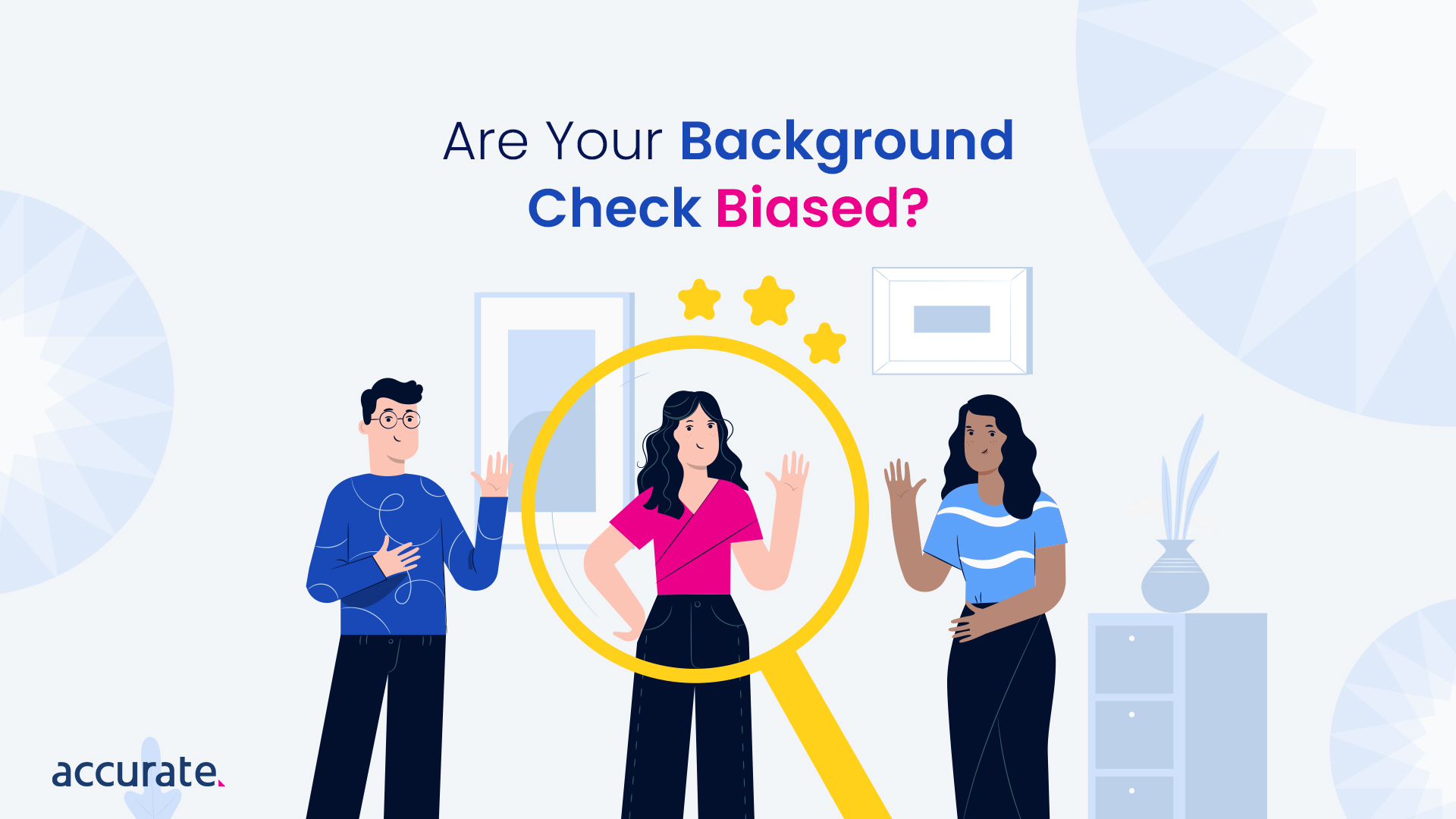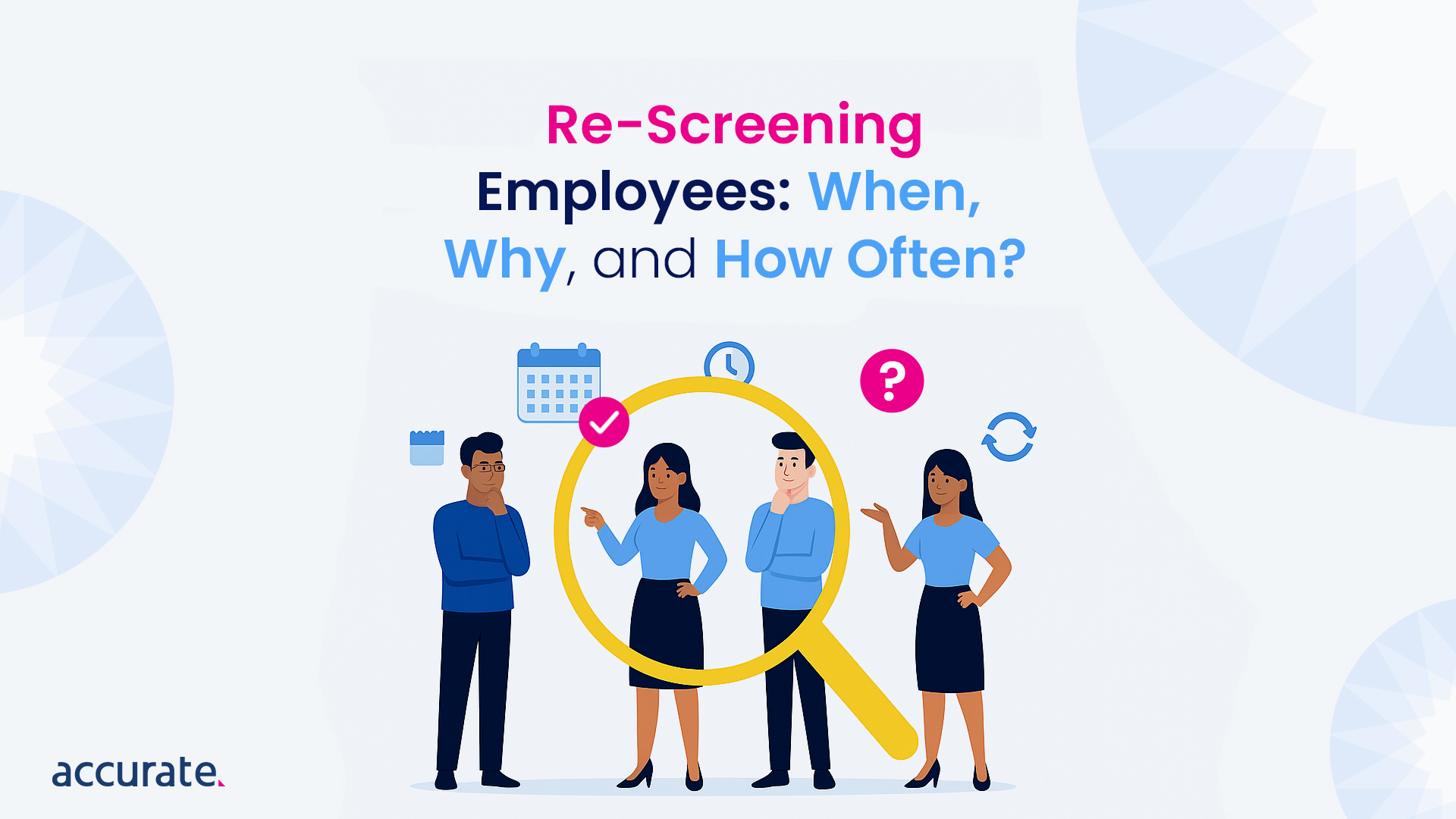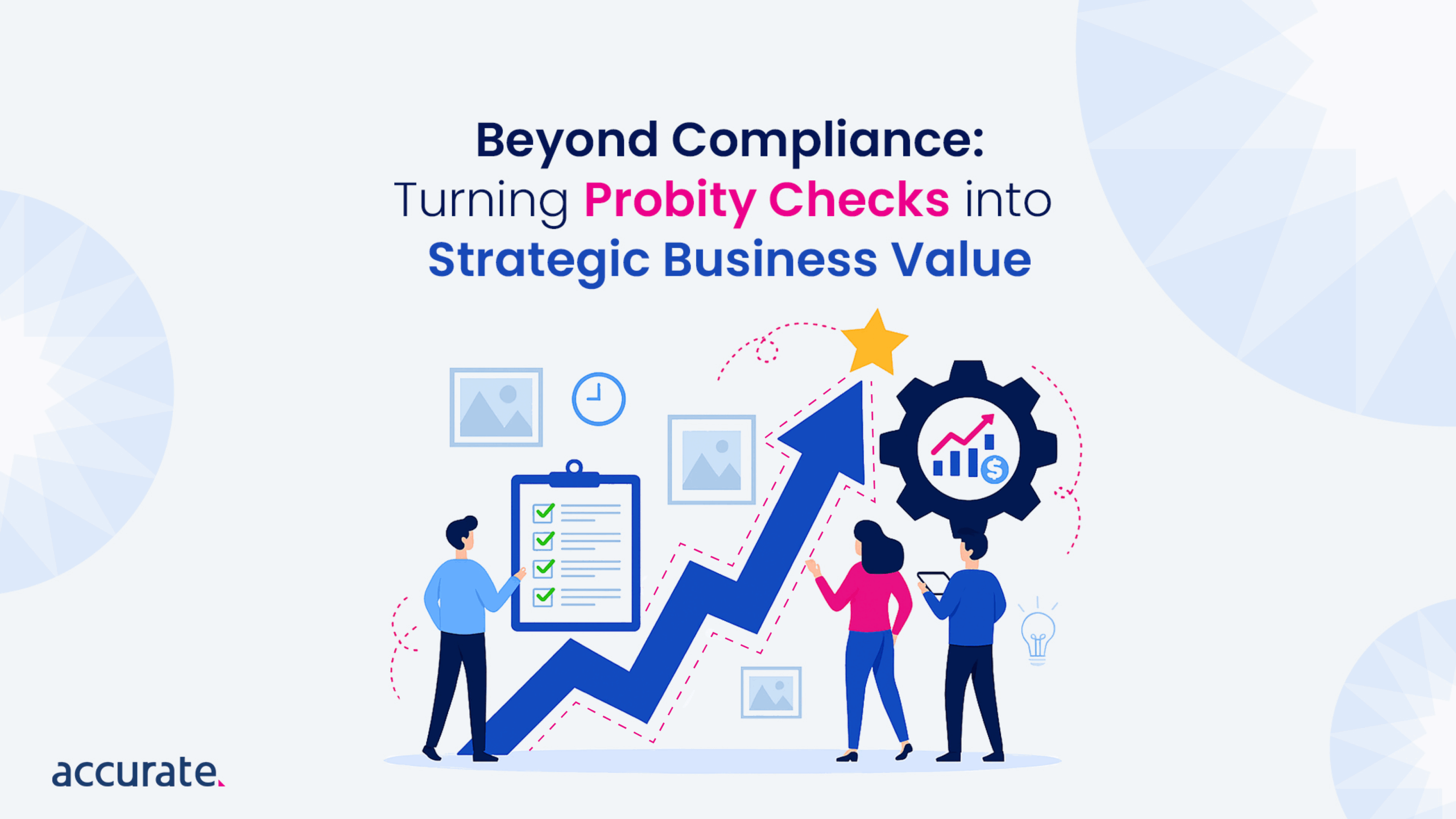Businesses increasingly rely on background checks during hiring. They are seen as essential tools to verify the trustworthiness and suitability of potential employees. But background checks can unintentionally include hidden biases that exclude qualified, diverse candidates from consideration.
Unchecked biases in the screening process could mean missing out on top talent, damaging your company’s reputation, and even risking legal complications.
Yet, many are unaware that their current practices may inadvertently lead to discriminatory outcomes against certain groups.
This article guides HR managers and business owners through understanding how biases occur in background checks, covering criminal checks, employment verifications, education and credit checks, and more. Then we’ll provide actionable steps to audit and improve these processes for fairness and inclusivity.
If you’re serious about building a fair, diverse, and inclusive workforce, this guide will help get you there.
Understanding Bias in Background Checks
When discussing bias in background checks, we refer to situations where screening practices unintentionally disadvantage certain candidates due to assumptions or stereotypes rather than job-related criteria.
Biases typically fall into two categories:
- Implicit Bias: These are unconscious attitudes or stereotypes affecting our understanding and decisions. Hiring managers might unintentionally lean towards candidates who share similar backgrounds or characteristics.
- Systemic Bias: These biases are deeply ingrained in processes and policies. For instance, policies automatically excluding candidates with any criminal record, regardless of context, can disproportionately impact certain demographic groups.
Common biases include:
- Confirmation Bias: Focusing on information that confirms existing beliefs about a candidate rather than evaluating objectively.
- Affinity Bias: Preferring candidates who share characteristics or experiences with the decision-maker.
- Stereotyping: Making assumptions based on group characteristics, such as assuming negative traits from credit issues or criminal records without context.
Such biases can severely impact hiring diversity, resulting in a narrower talent pool and less innovative workforce. Recognising these biases is the first step towards mitigating them.
Why Fairness and Inclusivity in Background Checks Matter
Bias-free background checks are about more than just ethical hiring, they’re also a business and compliance necessity.
Legal Compliance
Employment laws worldwide, including Australian anti-discrimination and privacy laws, mandate fair and unbiased hiring practices. Companies that unfairly reject candidates based on biased background checks could face costly lawsuits or regulatory penalties.
Ethical and Reputational Considerations
Fair hiring enhances your company’s brand and reputation. Research shows that 76% of job seekers actively prefer companies with strong diversity, equity, and inclusion (DEI) practices. Candidates notice how your company approaches fairness, impacting both talent attraction and employee retention.
Business Performance
Companies that embrace diversity perform better. Diverse teams have proven to foster innovation, offer broader perspectives, and solve problems more effectively. Conversely, biased background screening practices risk missing talented candidates and contributing to costly staff turnover.
Recent data reveals that organisations practising inclusive hiring are 1.7 times more innovative and that companies in the top quartile for gender diversity on executive teams were 25 % more likely to have above-average profitability compared to less diverse organisations.
Deloitte Australia research also shows that inclusive teams outperform their peers by 80% in team-based assessments.
Employee Retention and Talent Development
When people feel seen at work, they’re more likely to invest in the company long-term. Besides saving on turnover costs, this provides necessary continuity, creates deeper institutional knowledge and fosters more valuable, productive collaboration. Data from Deloitte supports this by saying, “If just 10% more of employees felt included, the company’s work attendance would increase by almost one day per year per employee, and in a similar organization of 10,000 people, increased inclusion would lead to an additional 70 employees per year choosing to stay with their employer.
Types of Background Checks and Potential Bias Points
Background checks come in various forms, each with unique risks of bias:
Criminal History Checks
Criminal checks can disproportionately impact minority groups due to systemic factors. Automatically excluding candidates with any criminal record can severely limit workforce diversity.
Fairness tips:
- Consider the relevance and recency of convictions.
- Apply “Ban the Box” strategies, delaying criminal checks until later in the hiring process, like after a conditional offer of employment has been made.
- Conduct individual assessments of each candidate, factoring in the candidate’s rehabilitation efforts and context (the candidate’s age at the time of the offense, severity, etc.).
- Global criminal history checks often take longer than domestic ones due to longer court processing times, language barriers, and other factors. Do not rescind an offer because the background check is taking too long unless absolutely necessary. (Consider using a background screening provider with global reach and compliance support to facilitate global screening and get quicker results.)
Employment Verification
Bias can arise when employment verification processes vary between candidates or when career gaps are unfairly viewed.
Fairness tips:
- Standardise verification procedures for every candidate.
- Use an adjudication matrix to consistently judge each candidate’s offenses and profile against a set of pre-defined criteria. Make sure your criteria match the roles, responsibilities and risk profile of each position.
- Objectively interpret employment gaps or short employment stints without making assumptions (e.g., avoid penalising parental leave or health-related breaks).
Education Verification
Education checks can unfairly favour candidates from prestigious local institutions and undervalue international qualifications.
Fairness tips:
- Consistently verify qualifications regardless of the institution.
- Assess international qualifications fairly, recognising equivalent credentials rather than prestige alone.
- Global education verifications can also take longer than their in-country counterparts. To ensure the fairest outcome, do not rescind an offer simply because the education check is taking too long.
Credit History Checks
Credit checks can indirectly discriminate against socioeconomically disadvantaged candidates, particularly as financial issues may arise from external factors such as medical debt.
Fairness tips:
- Restrict credit checks to positions directly related to financial management.
- Provide candidates an opportunity to explain negative credit histories.
- Follow local regulatory guidelines strictly, as some jurisdictions limit or prohibit employment-related credit checks.
Additional Background Checks
Other checks, like drug screenings or social media reviews, can inadvertently introduce bias, particularly if applied selectively.
Fairness tips:
- Apply these checks uniformly across all candidates for specific roles.
- Conduct social media checks selectively and cautiously, as it may reveal protected characteristics (age, race, religion) and introduce unintended biases to your selection process. Protected characteristics aside, social media searches may also reveal lifestyle factors that your hiring manager simply doesn’t like, which could also result in an unfair hiring decision they otherwise wouldn’t have made.
- Clearly document the necessity and procedure of each check to maintain consistency.
Quick Reference Table
| Check Type | Potential Bias Points | Fairness Strategies |
| Criminal History | Blanket exclusion, systemic disparities | Individual assessments, Ban-the-Box policy |
| Employment Checks | Inconsistent processes, penalising career breaks | Standardise procedures, objectively assess gaps |
| Education Checks | Valuing certain institutions over others | Evaluate international and local degrees equally |
| Credit Checks | Socioeconomic bias | Limit use to relevant roles, allow explanations |
| Social Media Checks | Access to protected personal characteristics | Uniform application, third-party redaction |
How to Audit Your Background Check Process for Fairness
Auditing your background check processes can identify hidden biases and lead to improved fairness in hiring. Here’s a step-by-step guide to auditing effectively:
Step 1 – Review Your Policies and Criteria
Start by closely examining your current background check guidelines and criteria. Look for rules like automatic disqualifications based on any criminal record or stringent credit requirements. Evaluate each policy to determine if it is genuinely necessary for the role.
- Ask: Is this criterion directly related to job performance?
- Modify or remove any overly broad rules that could unintentionally discriminate.
Step 2 – Collect and Analyse Data
Gather data from your hiring records. Review who is successfully onboarded to your organisation and whose offers are rescinded, then look for any common trends that might suggest bias in your screening process:
- Break down results by demographics such as race, gender, age, and ethnicity.
- Look for clear patterns or disparities in rejection rates among different groups.
- Use established metrics such as the “80% rule” (four-fifths rule) to highlight potential bias. This involves comparing selection rates between demographic groups; significant discrepancies might indicate bias.
Step 3 – Identify Bias Points
Examine your data closely to pinpoint where biases may be occurring.
- Are particular demographics disproportionately affected by certain checks?
- Is bias occurring at the criteria-setting stage or during human review?
- Watch out for repeated rejections among certain groups or a high rate of candidate disputes, which could indicate unfairness or inaccuracies in your screening process.
Step 4 – Solicit Feedback
Encourage feedback from all relevant parties involved:
- Gather insights from your HR team members involved in conducting or reviewing checks.
- Consider anonymous candidate surveys to capture experiences with your background check process.
- If resources permit, consider external expert review for an unbiased perspective.
Step 5 – Reform and Update the Process
Implement necessary improvements based on your findings:
- Adjust overly strict or irrelevant screening criteria.
- Introduce individual assessments, particularly for criminal record reviews, considering factors such as the relevance, severity, and timing of past offences.
- Establish standardised, transparent processes to ensure consistency.
- Implement checks and balances, such as a second HR reviewer for sensitive decisions, to minimise the risk of bias from individual judgment.
Step 6 – Training and Education
Adjusting policies alone won’t remove bias entirely. Staff education is essential:
- Regularly train hiring managers and recruiters on unconscious bias and legal fairness requirements.
- Ensure your team understands any automated tools or algorithms, their limitations, and how to interpret their outcomes responsibly.
Step 7 – Documentation and Transparency
Clearly document your findings, adjustments, and new processes:
- Update written policies to reflect changes.
- Ensure transparency internally among hiring teams, and externally communicate your fairness practices to candidates.
Step 8 – Ongoing Monitoring
Regular audits ensure continual fairness:
- Schedule annual or biannual reviews to reassess background check outcomes.
- Adjust your audit frequency based on hiring volume and any significant policy or legal changes.
- Continuously monitor key metrics such as demographic pass rates to maintain fair and equitable practices over time.
Best Practices for Fair and Inclusive Background Checks
Here’s a collection of practical guidelines you can adopt immediately:
- Job-Relevance Over Blanket Rules: Limit your background checks to criteria genuinely relevant to job requirements. Avoid automatic disqualifications based on unrelated history.
- Consistent Procedures for All Candidates: Standardise your processes so that every candidate undergoes identical checks and evaluations. Document these processes clearly.
- Ban-the-Box Timing: Delay criminal history inquiries until later stages of hiring. Evaluate candidates initially on qualifications rather than past mistakes.
- Individualised Assessments: When issues arise from background checks, evaluate on a case-by-case basis. Consider context, relevance, recency, and rehabilitation.
- Transparency with Candidates: Clearly communicate your process upfront, obtain necessary consents, and offer opportunities for candidates to explain or dispute findings.
- Reliable and Fair Third-Party Providers: Use background check providers known for accuracy and fairness, as well as a professional compliance team to advise you on legal and compliance issues. Regularly ask your providers how they audit their systems for potential bias.
- Diverse Hiring Panels: Involve diverse team members in reviewing background check outcomes. Diverse perspectives reduce the potential for biased decision-making.
- Documentation and Appeals: Keep records of decisions and offer an appeal or review process for candidates adversely affected by background checks.
- Stay Current with Regulations: Regularly review legal changes affecting background checks to remain compliant and fair.
- Inclusive Workplace Culture: Advocate for a culture of second chances, where hiring practices reflect broader organisational values of inclusivity.



